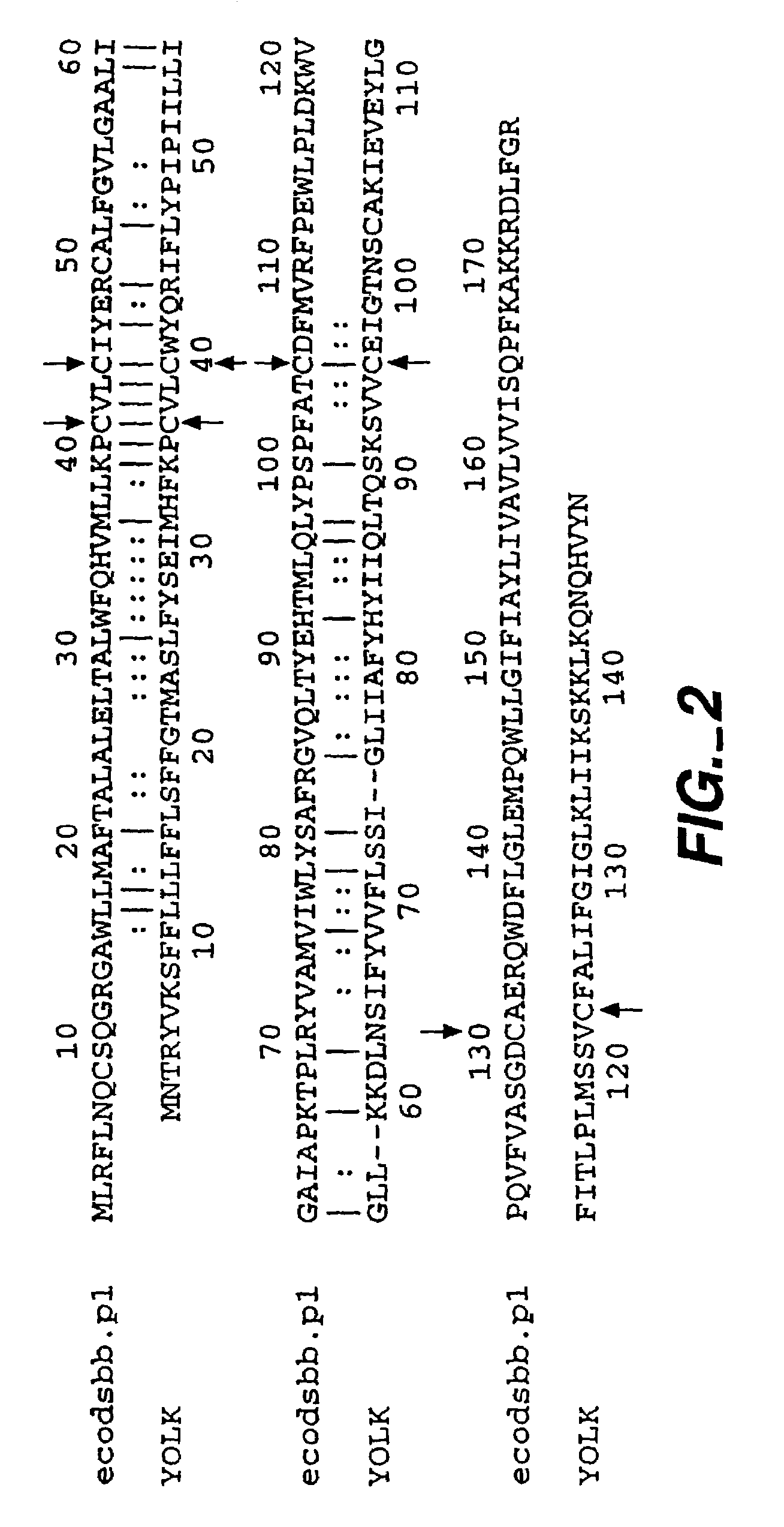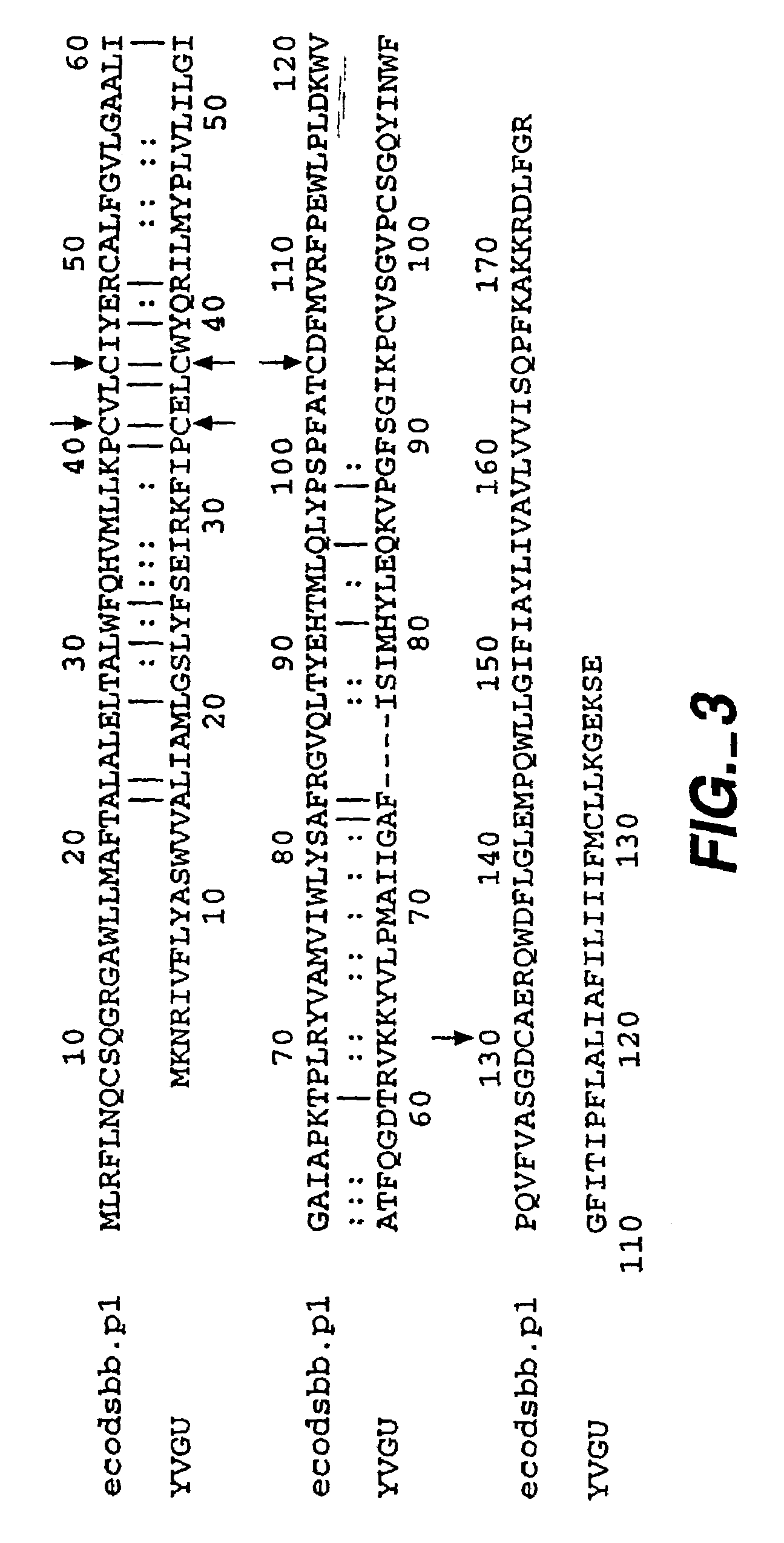Expression vectors encoding Bacillus subtilis disulfide bond isomerase and methods of secreting proteins in gram-positive microorganisms using the same
- Summary
- Abstract
- Description
- Claims
- Application Information
AI Technical Summary
Benefits of technology
Problems solved by technology
Method used
Image
Examples
example i
Preparation of a Genomic Library
[0071]The following example illustrates the preparation of a Bacillus genomic library.
[0072]Genomic DNA from Bacillus cells is prepared as taught in Current Protocols In Molecular Biology vol. 1, edited by Ausubel et al., John Wiley & Sons, Inc. 1987, chapter 2. 4.1. Generally, Bacillus cells from a saturated liquid culture are lysed and the proteins removed by digestion with proteinase K. Cell wall debris, polysaccharides, and remaining proteins are removed by selective precipitation with CTAB, and high molecular weight genomic DNA is recovered from the resulting supernatant by isopropanol precipitation. If exceptionally clean genomic DNA is desired, an additional step of purifying the Bacillus genomic DNA on a cesium chloride gradient is added.
[0073]After obtaining purified genomic DNA, the DNA is subjected to Sau3A digestion. Sau3A recognizes the 4 base pair site GATC and generates fragments compatible with several convenient phage lambda and cosmi...
example ii
Detection of Gram-positive Microorganism Disulfide Bond Isomerase
[0075]The following example describes the detection of gram-positive microorganism Dsb1 or Dsb2.
[0076]DNA derived from a gram-positive microorganism is prepared according to the methods disclosed in Current Protocols in Molecular Biology, Chap. 2 or 3. The nucleic acid is subjected to hybridization and / or PCR amplification with a probe or primer derived from Dsb1 or Dsb2.
[0077]The nucleic acid probe is labeled by combining 50 pmol of the nucleic acid and 250 mCi of [gamma 32P] adenosine triphosphate (Amersham, Chicago Ill.) and T4 polynucleotide kinase (DuPont NEN®, Boston Mass.). The labeled probe is purified with Sephadex G-25 super fine resin column (Pharmacia). A portion containing 107 counts per minute of each is used in a typical membrane based hybridization analysis of nucleic acid sample of either genomic or cDNA origin.
[0078]The DNA sample which has been subjected to restriction endonuclease digestion is fract...
PUM
 Login to View More
Login to View More Abstract
Description
Claims
Application Information
 Login to View More
Login to View More - R&D
- Intellectual Property
- Life Sciences
- Materials
- Tech Scout
- Unparalleled Data Quality
- Higher Quality Content
- 60% Fewer Hallucinations
Browse by: Latest US Patents, China's latest patents, Technical Efficacy Thesaurus, Application Domain, Technology Topic, Popular Technical Reports.
© 2025 PatSnap. All rights reserved.Legal|Privacy policy|Modern Slavery Act Transparency Statement|Sitemap|About US| Contact US: help@patsnap.com



